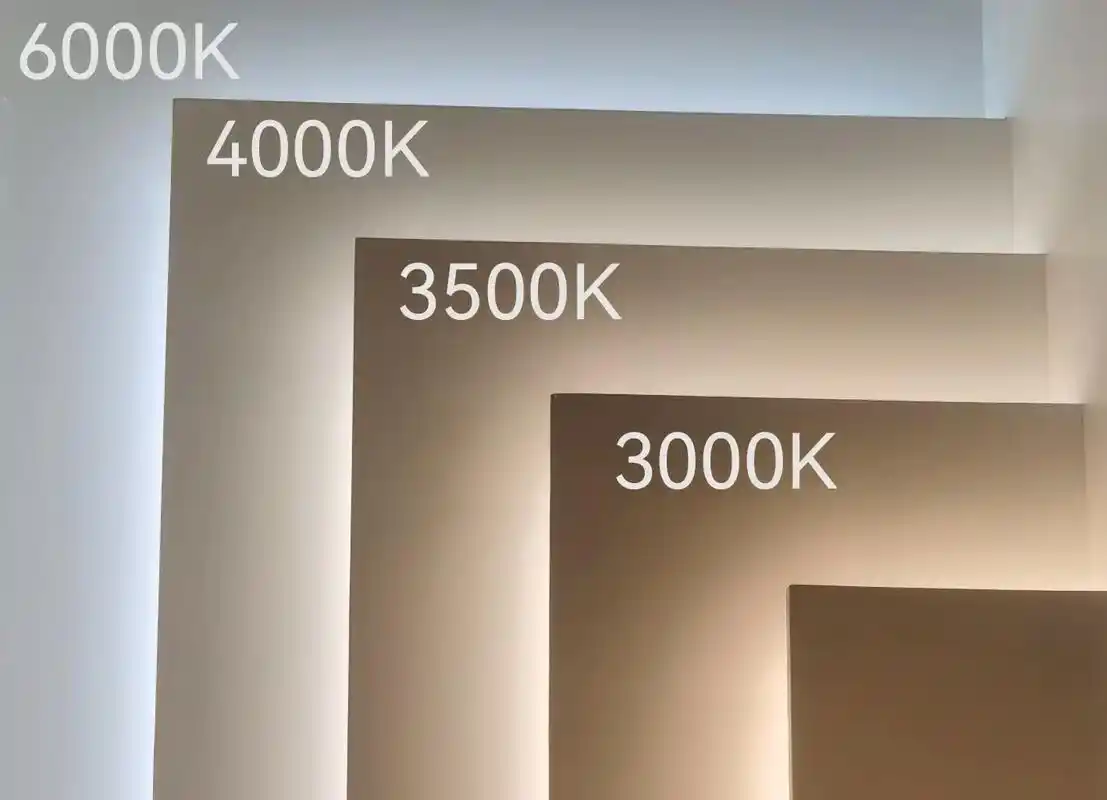A Guide to Choosing Lighting Color Temperature for Different Scenarios: Choosing the Right Light for More Comfort Based on Your Needs
When selecting lighting for an apartment, office, warehouse, or workshop, color temperature is an often overlooked yet crucial factor. It directly impacts our comfort and accuracy at work, as well as our well-being (e.g., emotional stimulation, relaxation, and concentration) and our perception of the environment (e.g., color reproduction and object shape recognition). Especially in autumn and winter, when natural light decreases and the use of artificial light increases significantly, it's even more important to precisely match lighting color temperature to the activities and functions of the space. 1. Understand the Basics: Color Temperature Units and Classifications
The unit of color temperature is Kelvin (K). Different values correspond to different light colors. In the Lena Lighting tunable white light system, common color temperatures and characteristics are categorized as follows:
Color Temperature Value Light Color Type Common Light Source/Scene Reference Color Temperature Range
2800K Very Warm White Light Traditional Incandescent Light Warm Light
3200K Incandescent Studio Light Basic Light for Photography and Makeup Studios Warm Light
4000K White Light General Light for Everyday Indoor Use Neutral Color Temperature
5000K Cool White Light Common Light for Offices and Workshops Cool Light
6500K Daylight Color Near Midday Natural Light Cool Light
From the above categorization, it is clear that:
Warm Light: Color temperature below 3300K, with a yellowish tint and a softer feel;
Cold Light: Color temperature above 5000K, with a bluish-white tint and a brighter, fresher appearance;
Neutral Color Temperature: Between 3300K and 5000K 4000K white light is the most popular choice, offering a balance of softness and clarity, and wide adaptability.

2. Selecting Color Temperature by Scenario: Prioritizing Functionality, Considering User Experience
Different spaces have different core functions and lighting requirements. Precise matching maximizes the practical value of lighting.
1. Cold Light (>5000K): Focusing and Engaging, Suitable for High-Demand Scenarios
The core advantage of cold light is that it stimulates attention and enhances concentration. It also enhances ambient brightness and object clarity, making it suitable for scenarios requiring high levels of focus and visual recognition:
Work/Production Environments: Warehouses, production workshops, precision machining centers, and other places that require prolonged concentration and avoid visual fatigue. Cold light can reduce drowsiness and improve operational accuracy. It can also be used in offices (especially for positions requiring high concentration, such as design, programming, and data processing) to help maintain high productivity. Commercial display scenarios: Public areas in shopping malls, store windows, and merchandise shelves (such as jewelry, electronics, and clothing). Cool light can better reproduce the colors and details of products, enhancing their visual appeal and attracting potential customers.
2. White light (approximately 4000K): Versatile and realistic, suitable for a variety of scenarios.
White light is closest to daylight. Its core advantages are high color reproduction and natural, non-glare light. It can meet basic lighting needs while avoiding color deviation, making it a "universal" color temperature.
Daily home scenarios: Areas requiring precise color judgment, such as bathrooms (to avoid color shift when painting walls), wardrobes (to restore true colors when selecting clothing), and kitchens (to ensure freshness when preparing ingredients).
Sports and fitness scenarios: Gyms, fitness studios, swimming pools, etc. White light can create a vibrant atmosphere while allowing athletes to clearly see movements and reduce the risk of injury.

General public scenarios: Corridors, stairwells, bathrooms, and other public areas. White light offers both brightness and softness, adapting to the visual preferences of different groups. 3. Warm Light (<3300K): Relaxation and Atmosphere, Suitable for Relaxation
The core advantage of warm light is that it creates a warm and soothing atmosphere, alleviating visual fatigue and psychological stress. It is suitable for scenarios where relaxation and rest are the core needs:
Home Relaxation: Living room (for family conversations and TV viewing), bedroom (for bedtime reading and resting), dining room (for dining). Warm light can reduce the "cold" feeling of the environment, enhance the warmth of the space, and promote relaxation.
Casual Commercial: Cafes, teahouses, guest rooms in B&Bs, etc. Warm light can enhance the comfort and atmosphere of the space, making it easier for customers to immerse themselves in a relaxing environment.


